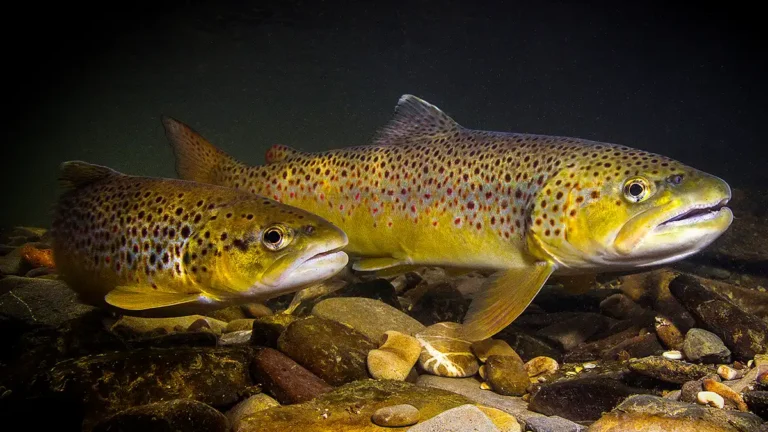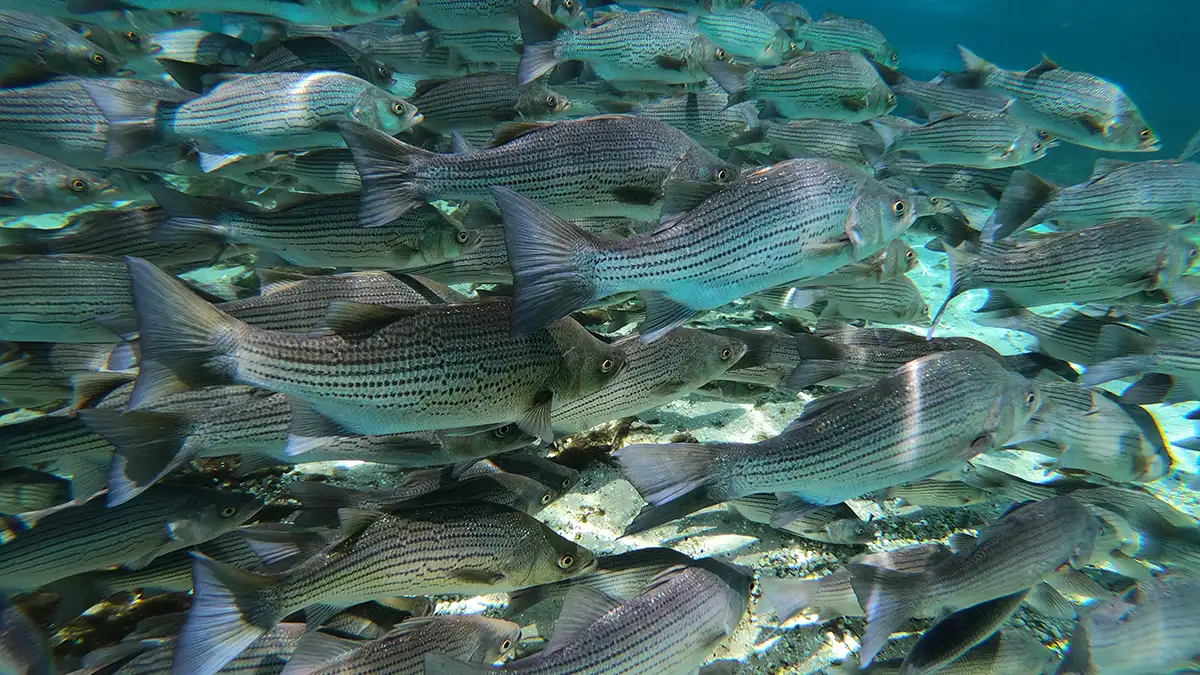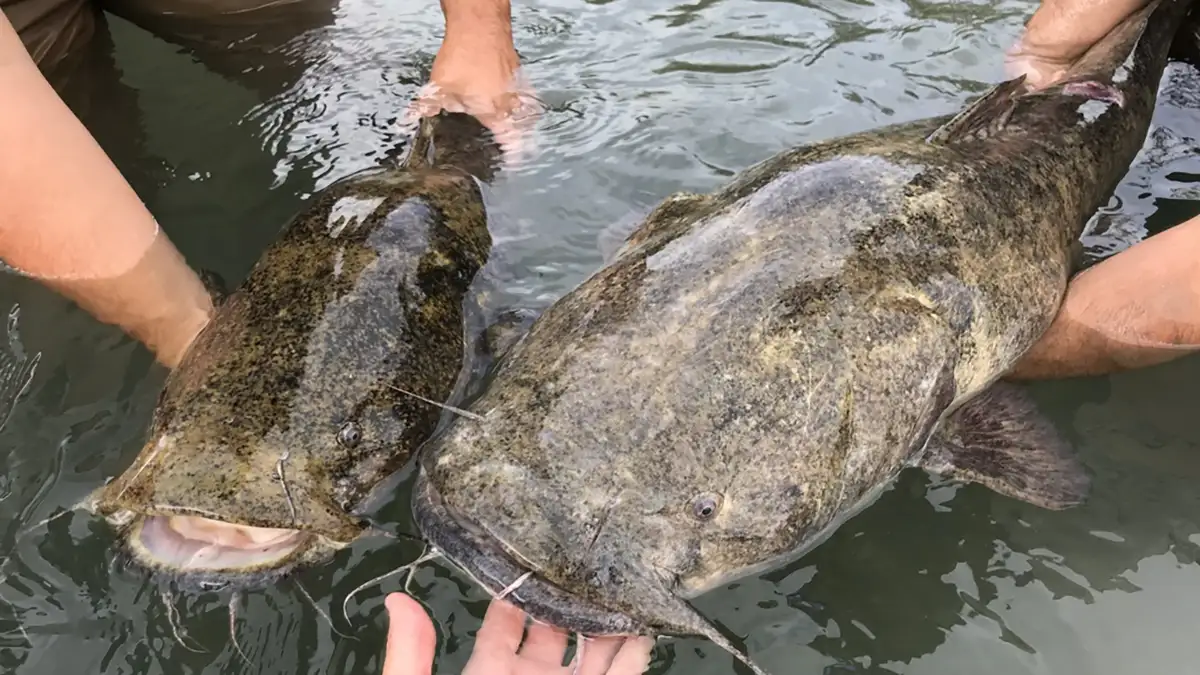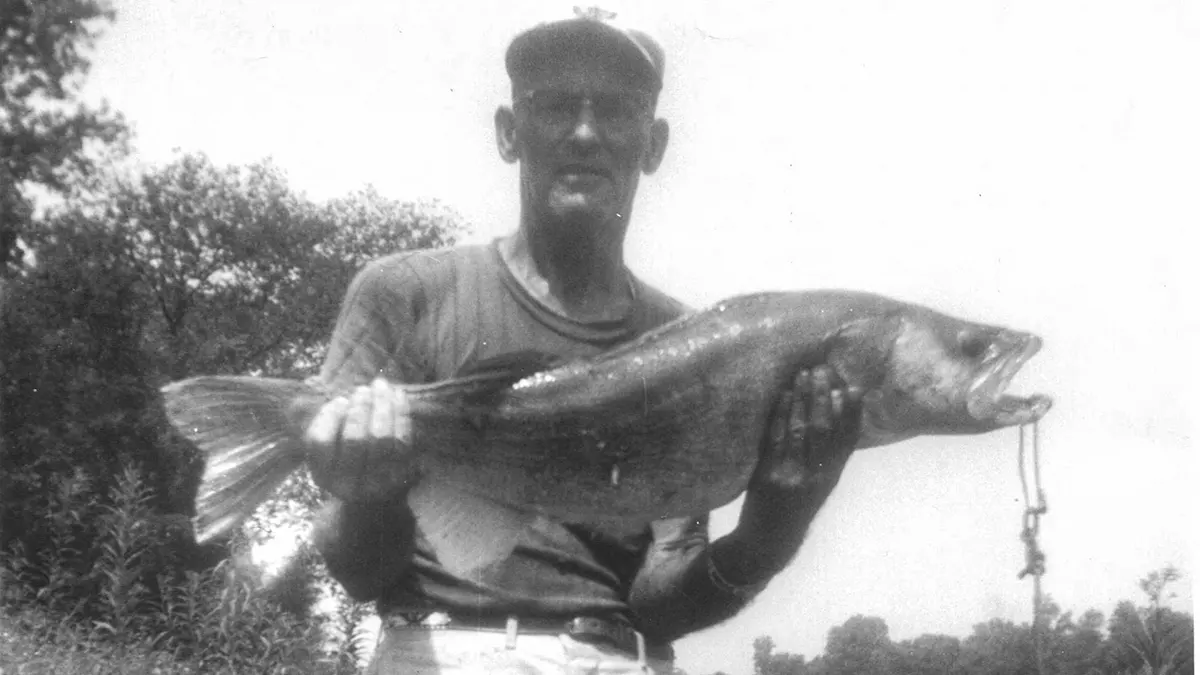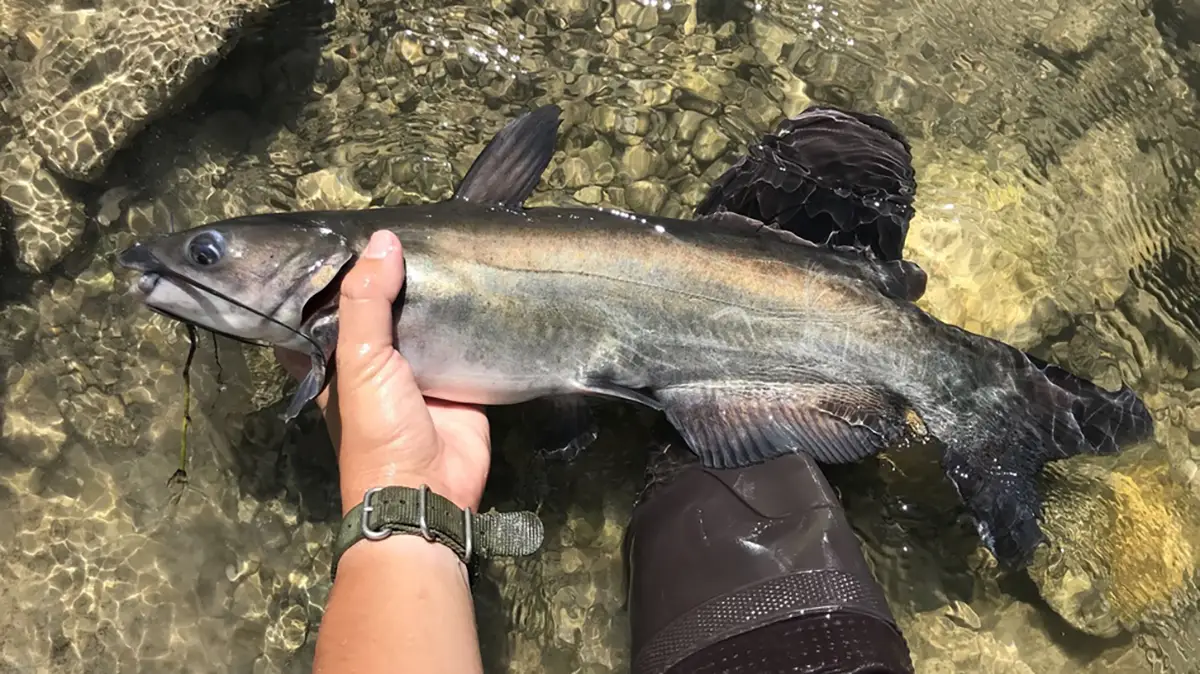Brown trout offer a great amount of variation in body coloration and spotting and survive in almost all cool water aquatic environments. The US has been home to several former world records although they are a non native species in the US. Today they are both a desirable trophy species and a threat to native species. We will cover all you need to know about brown trout in this species profile.
The History of the Species
The brown trout Salmo trutta was first described by Carl Linnaeus in “System of Nature” in 1758. He assigned them the name Salmo trutta with Salmo being latin for salmon and trutta being latin for trout.
They belong to the Salmonidae family of fishes that contain all salmon, trout, and char species which are collectively known as salmonids. Throughout time there have been dozens of proposed names for brown trout species based on color and marking variations, environmental preferences, or geographic location. Some of those include Salmo trutta morpha trutta for the anadromous sea trout, Salmo trutta morpha fario referring to river based brown trout and Salmo trutta morpha lacustris for lake based brown trout.
Alternative names for brown trout
Brown trout have many common names including German trout, German Brown trout, English Trout, Seatrout, Bull Trout, etc.
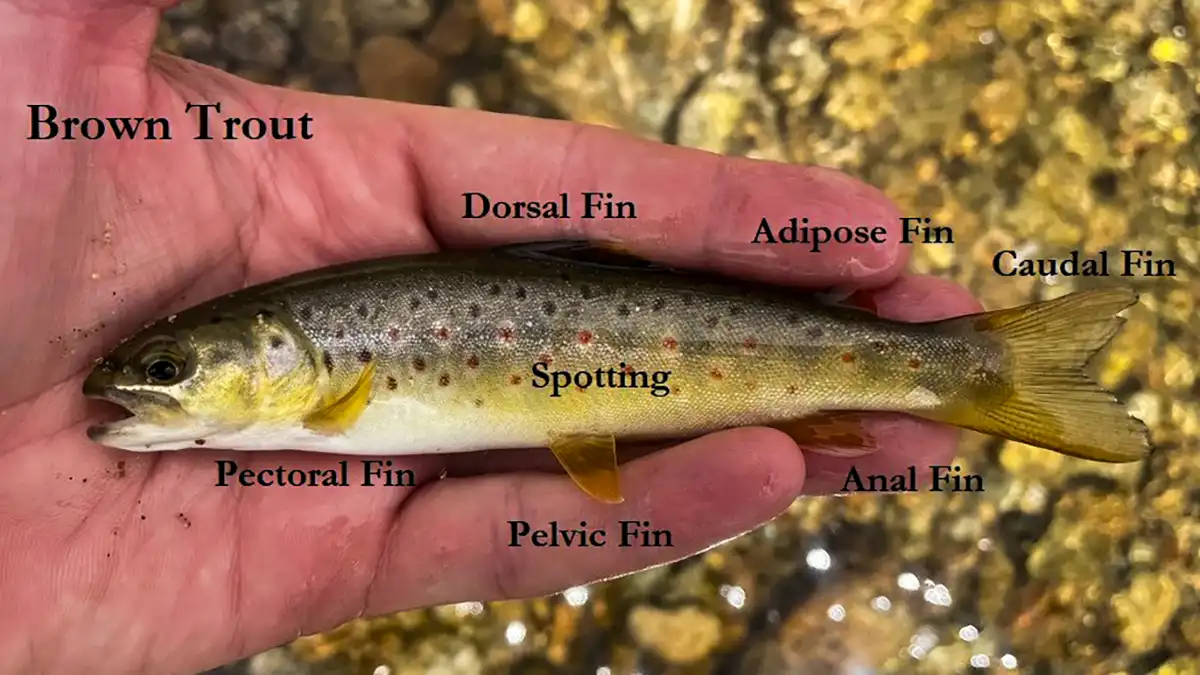
Brown Trout Identification Tips
Brown trout typically have a streamlined torpedo body shape, unless they are located in pools where they can become slightly rounder in appearance. Their entire body is covered in small round scales. The head is slightly pointed with males having a definitive elongated snout and females having a shorter rounded snout. The mouth will have a true underbite with the lower jaw extending past the upper. This will become more pronounced during spawning season in males as they develop a hook jaw or “kype.”
Brown trout can have unbelievably unique body coloration and spotting patterns, which can often be manipulated by their physical environment. The coloration of their back and sides can range from olive-green to yellow or brownish. This coloration lightens down the sides of the body and is often silver to white in the center. Their stomachs are lighter yellow to white and the majority of their body and top of their head is covered in definitive spotting. The spots can range from black to red in color sometimes with a white margin and will be darker than the body coloration. This is a distinguishing characteristic for brown trout vs brook trout, whose spots will be lighter in coloration than their body.
The caudal tail fin is primarily squared with a slight fork. The dark spotting will be present on the upper edge of the caudal fin and throughout the entire dorsal and adipose fin. The lack of dark spotting throughout the entire caudal fin is a distinguishing feature for identifying brown trout vs rainbow trout, whose tail will be covered in black spotting.
No spotting or white edges will be found on the pelvic or anal fins. These are great characteristics to help differentiate between rainbow, brook, and brown trout as rainbow trout have moderate spotting on their pelvic and anal fins and brook trout have definitive white edges to their pelvic and anal fins.
For those technical anglers brown trout have countable fin rays and spines. The dorsal and anal fins will have 3 to 4 spines, while all other fins will only contain rays. The dorsal fin will have 10 to 15 rays. The anal fin will have 9 to 14 rays and the caudal fin will have 18 to 19 rays.
Brown trout found in lakes will have a more silver body coloration and primarily black spotting. Those found in marine environments will be almost completely silver with black spotting but quickly change once they migrate back into freshwater. Brown trout found in shallow clearwater environments will be brighter in coloration with more red spotting.
Throughout the US the variance in brown trout coloration and spotting is wide, primarily due to ancestry of the fish coming from numerous broad stock from around the world.
See more information here, on how to identify brown trout from other types of trout.
To see the historic and current distribution of brown trout, we created this interactive map
Location and Distribution
Brown trout like the other members of the Salmo genus have primary origins in waterbodies with a connection to the Atlantic ocean. The only Salmo species that is considered native to North America would be the Atlantic Salmon Salmo salar. Brown trout are not native to any part of North America and are an introduced species. Their native range is northern Europe throughout Russia, south into North Africa and east into Afghanistan and Pakistan.
Brown trout were first introduced in North America in 1883. The then US Fish Commissioner Spencer Fullerton Baird authorized the purchase of brown trout eggs from the German Fishing Society. These eggs were divided between three hatcheries in New York and Michigan.
Over the next few years eggs were continually imported from Scotland, England and Germany allowing for various forms of brown trout to be stocked in the US. The first public water stocking occurred in April 1884 with fish being introduced into the Baldwin River in Michigan.
This process continued and by 1900 brown trout had been introduced into many inhabitable waterways and throughout 38 states. Many of these populations became established and self-sustaining and the populations that did not become established must be periodically restocked today to provide recreational fishing for brown trout.

Spawning Rituals
Like most salmonids, Brown Trout exhibit anadromous behavior, which means they spawn in freshwater but spend a part of their life in the sea. However, some populations can be entirely freshwater residents and never migrate to the sea but still spawn successfully.
Brown Trout tend to spawn in the fall to early winter months of September and December when water temperatures reach between 42 F and 48 F. This takes place after the rainbow and cutthroat trout spawn in the spring and provides a unique risk to brown trout offspring.
The female brown trout begins spawning by finding a shallow area to create a nest in gravel. They dig a small hole in gravel to lay their eggs which are quickly fertilized by aggressive males that fight for the opportunity. Once fertilized the female will cover the eggs in gravel, the resulting nest is often called a redd. Each redd may contain 200 to 1000 eggs. An individual female may produce 1,000 to 10,000 eggs per year depending on her body size.
The fertilized eggs remain in the redd for 30 to 150 days depending on the water temperature, with warmer temperatures resulting in faster egg hatching. It is important that the redd has adequate water flow through it to provide oxygen under the gravel.
Size and Lifespan
The eggs will hatch during winter to early spring and the resulting offspring will be around 1/2 inch in length. They will remain in the nest for 2 or 3 weeks as what is called an alevin stage fish. At this stage, the alevins still carry a yolk sac that provides them with nutrients. They stay in the gravel, safe from predators, until the yolk sac is fully absorbed, and they become fry. This is typically around the time they become 1 inch in length.
Once the alevins become fry, they leave the gravel and start swimming freely in the water. Their growth rates will be highly dependent on the type of waterbody they inhabit. Streams result in a growth rate of 2 to 4 inches per year for their first several years that slows overtime.
Marine environments support a faster growth rate of 4 to 6 inches per year but usually only last for short periods. Lake environment growth rates can be highly dependent on competition from other species as well as forage availability and can vary from 1 to 6 inches a year. Growth will dramatically increase once brown trout are over 12 inches and switch to consuming other fish rather than invertebrates.
Depending on the environment it will take 2 to 4 years for the juvenile brown trout to grow into adults and mature. They may then begin their migratory journey, if applicable, to the sea or large lakes. Spawning size for males begins between 6 to 10 inches and females between 8 to 12 inches. Individuals over 40 lbs and 40 inches in length can be found in some parts of the US but the typical trophy size brown trout is 20+ inches.
Brown trout in freshwater environments live a shorter life typically under 10 years while anadromous brown trout may live over 15 years. The oldest brown trout have been found to be 35+ years.

Brown Trout Habitat
Brown trout are a highly adaptable species that are considered anadromous although many populations today are completely blocked from their marine migrations. When they do migrate brown trout typically spend an initial 1 to 5 years in freshwater, migrate to saltwater for ½ to 4 years then migrate back to freshwater to spawn.
They prefer clear, cold, and well-oxygenated freshwater environments like rivers, streams, and lakes. They are found in deeper pools and can thrive in both running and still waters. Brown trout will survive in warmer waters, up to 75 F, compared to other salmonid species. Although they can survive in warmer water, they will have a strong affinity to ice, with growth rates, fry and egg survival, and lifespan greatly improving when the waterbody has some ice coverage annually.
Brown trout will often outcompete native salmonids in fast moving waters as well. They can be extremely territorial, pushing other fish from preferred habitat areas. Large individuals will have an affinity for undercut banks, hard surfaces, and ambush points. While juveniles can be found in and around aquatic vegetation.

Brown Trout Diet
Brown Trout are opportunistic predators and are known for their varied diet. They mainly feed on aquatic insects, crustaceans, small fish, and even terrestrial insects that fall into the water. Which is why fly fishing for brown trout is so popular. We have also compiled a list of popular artificial trout lures.
They are primarily sight feeding fish and prefer water with little to no turbidity. There is a correlation between size, growth, and forage preference with fish 2 to 12 inches consuming primarily aquatic insects and fish above 12 inches transitioning to piscivory. Once the piscivory foraging begins their diet will be primarily fish, crayfish, and fish eggs. Cannibalism of eggs and offspring often occurs in brown trout.
Brown Trout Threats
Technically the brown trout as a non native species has the potential to be a threat to native salmonid species as a direct competitor, predator, and through hybridization. Their ability to adapt to almost all environments and consume various forage allows them to be extremely successful anywhere a native species occurs.
In the same waterbody, they will most likely grow larger and faster than the native species and have led to complete replacement of brook, cutthroat, and golden trout in some cases. Hybridization in extreme situations can occur as brown trout begin to outnumber native species.
Brown trout have also led to the depletion of other native non salmonid species through predation. Examples throughout the US include the loss of suckers, chubs, and shiner species.
As with all salmonid species in the US there are environmental threats that brown trout face from loss of water flow, degrading water quality, habitat impairment, heavy metal toxicity, and climate change. These are typically waterbody specific and have led to federal funding support throughout the western US.
Brown Trout Facts You Need To Know
- The IGFA world record brown trout weighs 44 pounds 5 ounces. It was caught on the Ohau Canal in Twizel, New Zealand by Seumas Petrie in October 2020
- The US record brown trout is 41 pounds 8 ounces by Roger Hellen from Lake Michigan in Wisconsin.
- A brown trout from Bernese Alps in Switzerland determined to be 38 years old using otolith annuli count in 2021.
- The brown trout is likely the most widely distributed non native cold water fish species in the United States and only behind the common carp for most distributed non native fish to the US.
- The IUCN and Global Invasive Species Program nominated brown trout as one of the “100 of the World’s Worst invasive alien species”




